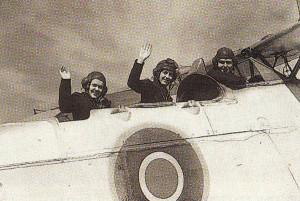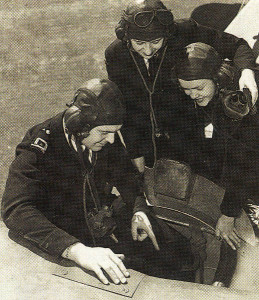
I was living in Canada in 1943 when, at the age of 21, I joined the Canadian Wrens. After six months’ basic training I was drafted to Ottawa to work in the Recruiting Office. After four months, I drafted to Halifax, Nova Scotia, and was a writer on board HMS Venture, a headquarters ship for Canada’s M.L.Flotilla. It was great fun working on board, but the ship was anchored in the harbour, and when the sea became rough, it was very difficult to type as the ship was constantly in motion.
After returning from leave in the spring of 1944, to my delight, I was drafted to Dartmouth, across the harbour, to work at the Royal Naval Air Station. Two Wrens were picked for this draft from about 100 applicants, and I was delighted to be one of them, as it meant working with kindred spirits. The ship was HMS Seaborn, and all the officers and ratings were English. I had the unique position of being on loan to the Royal Navy (FAA), paid by the Royal Canadian Navy, and living on a Royal Canadian Air Force Station.
The office we worked in was part of the hangar, and the noise was quite deafening sometimes with the roar and whir of aircraft engines, but we had a job to do and were thrilled to be working with the Fleet Air Arm.
Air Force personnel at the station, accustomed to the usual sight of sailors climbing in and out of cockpits and men in naval officers’ uniform, taking off from the runways, were now becoming used to seeing die two Wrens go to and from on the large base. Our office walls were covered with coloured sketches of aircraft, and there was definitely an aeronautical atmosphere to the naval office. We were both

popular with the English Naval Officers and ratings and quickly picked up
Limey lingo and Air Force jargon. When a pilot said: “Those DIs bind me rigid”, for instance, we knew he meant the daily inspection of aircraft was becoming monotonous to him. We were lucky to meet personnel who had served in all parts of the world, and also pilots who had flown over to the station from aircraft carriers engaged in escort duty in the North Atlantic.
Believe it or not, I was very nervous about flying, although there were many opportunities to do so. No way would I venture to fly in a Swordfish, but I was persuaded to have a flip in a Walrus, whose engine was above your head. The noise was horrendous, and I was glad to be back on terra firma once again. We often received good-natured quips such as “Can you Wrens fly yet?”, or “Have you got your wings yet?” I never got my wings as I spent most of my time in the office, not in the sky!
The Commanding Officer for whom I worked was a smashing bloke. He was very strict, but also had a sense of humour. He even took me up for flips in his private plane, a Wigeon, luckily not exposed to the weather.
During our service in Dartmouth, the weather went from one extreme to another. In the summer it was very hot, but the winters were freezing, and I must just add that when I returned to England in 1946,1 was so glad to experience our moderate climate as compared to the one in that part of Canada.
Nancye Charmings








